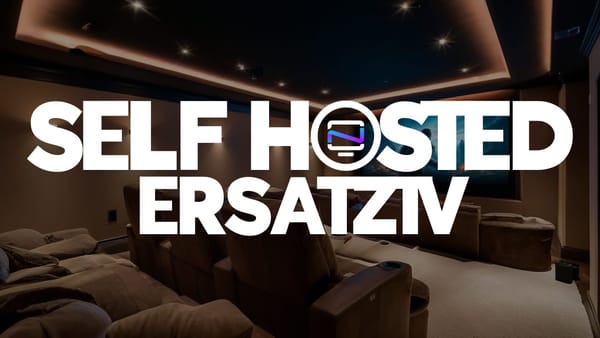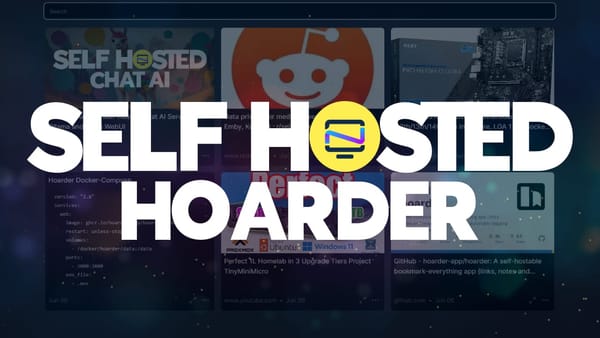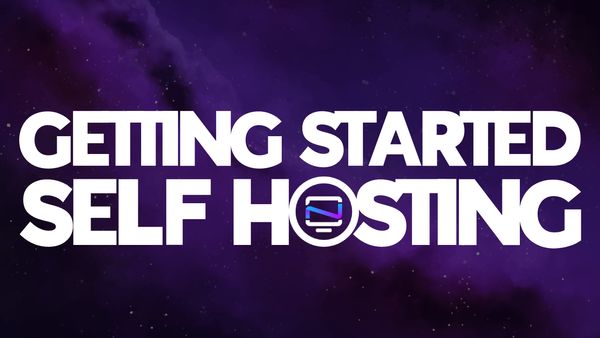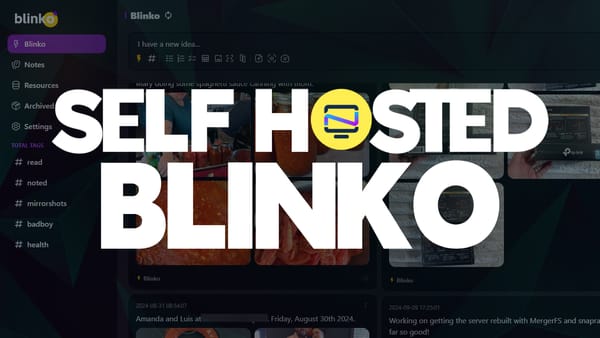Flame - The Self Hosted Minimal Dashboard
Flame is a minimalist self hosted dashboard for your apps and bookmarks to help you organize your homelab resources. 📑
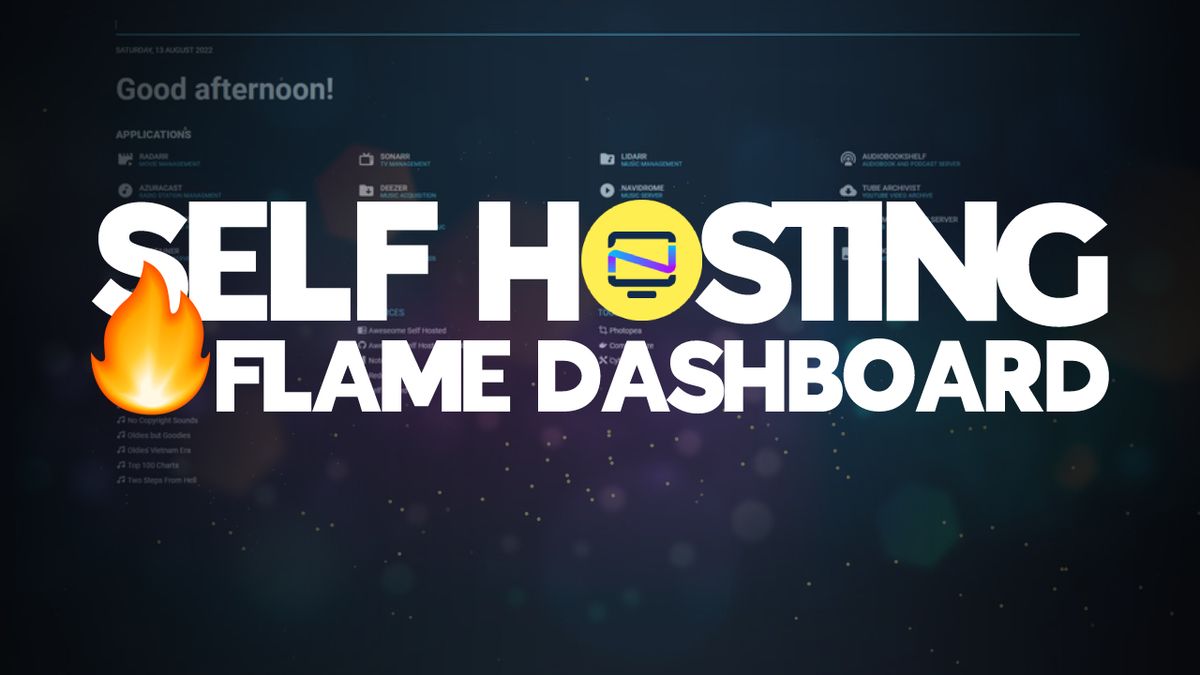
When it comes to dashboards, for me, simple is always better. And over the last few years while more and more dashboards were surfacing, I found myself trying so many different dashboards. It got to the point where I just stopped using them altogether for a link system called Linkding until recently.
What is Flame exactly?
Flame is self-hosted start page for your server. Its design is inspired (heavily) by SUI. Flame is very easy to setup and use. With built-in editors, it allows you to setup your very own application hub in no time - no file editing necessary.
Flame Dashboard core functionality
- 📝 Create, update, delete your applications and bookmarks directly from the app using built-in GUI editors
- 📌 Pin your favorite items to the home screen for quick and easy access
- 🔍 Integrated search bar with local filtering, 11 web search providers and ability to add your own
- 🔑 Authentication system to protect your settings, apps and bookmarks
- 🔨 Dozens of options to customize Flame interface to your needs, including support for custom CSS, 15 built-in color themes and custom theme builder
- ☀️ Weather widget with current temperature, cloud coverage and animated weather status
- 🐳 Docker integration to automatically pick and add apps based on their labels
Flame dashboard use cases
Flame is a simple dashboard that presents itself more as a landing or "start" page that is very simply put, just links to your apps and resources. This is great because Flame can be used for other things like a public facing resource list, radio station guide and more. In fact, I use it for my own radio station guide in a separate instance for friends and family so they can easily access my Azuracast hosted radio stations. This allows them to go to one central location and choose a station so they don't have to remember long links.

My personal use case is a bit different and much more tailored to homelab use with a dash of the radio stations mixed in.
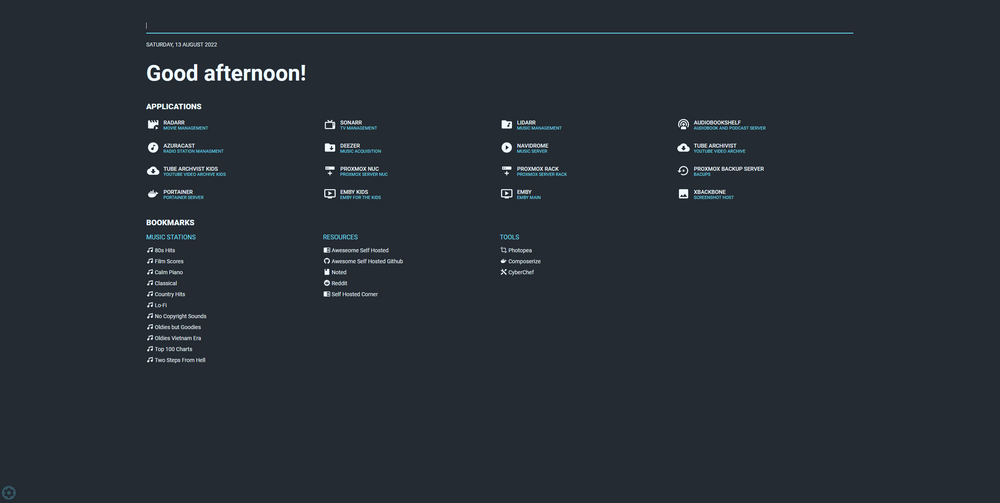
I have my self hosted applications at the top then bookmarks at the bottom separated by category. Music Stations, Resources and Tools. Your use case may be much different than mine but that's the beauty of it. You can customize your categories and do whatever you want with it.
Flame dashboard settings
Customizing Flame is done all within the web ui in the settings. Finally, a decent dashboard that doesn't require tediously editing a file.
Within the Flame settings, you can modify nearly everything to your preference. There are 16 different color themes to choose from. You can set the colors you want to be shown as default. And if you're feeling creative, you can create your own theme.
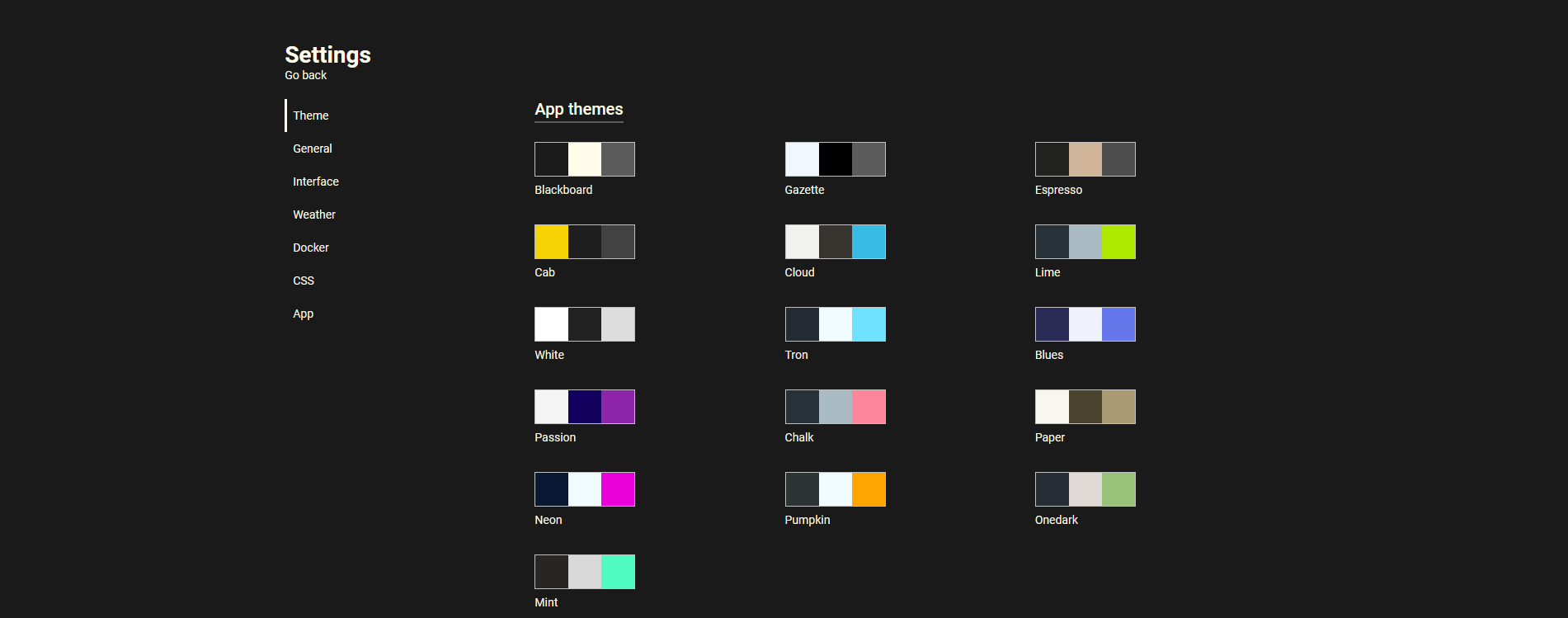
Within the general settings, you can change how bookmarks are opened when clicked and the default search engine you want to use.
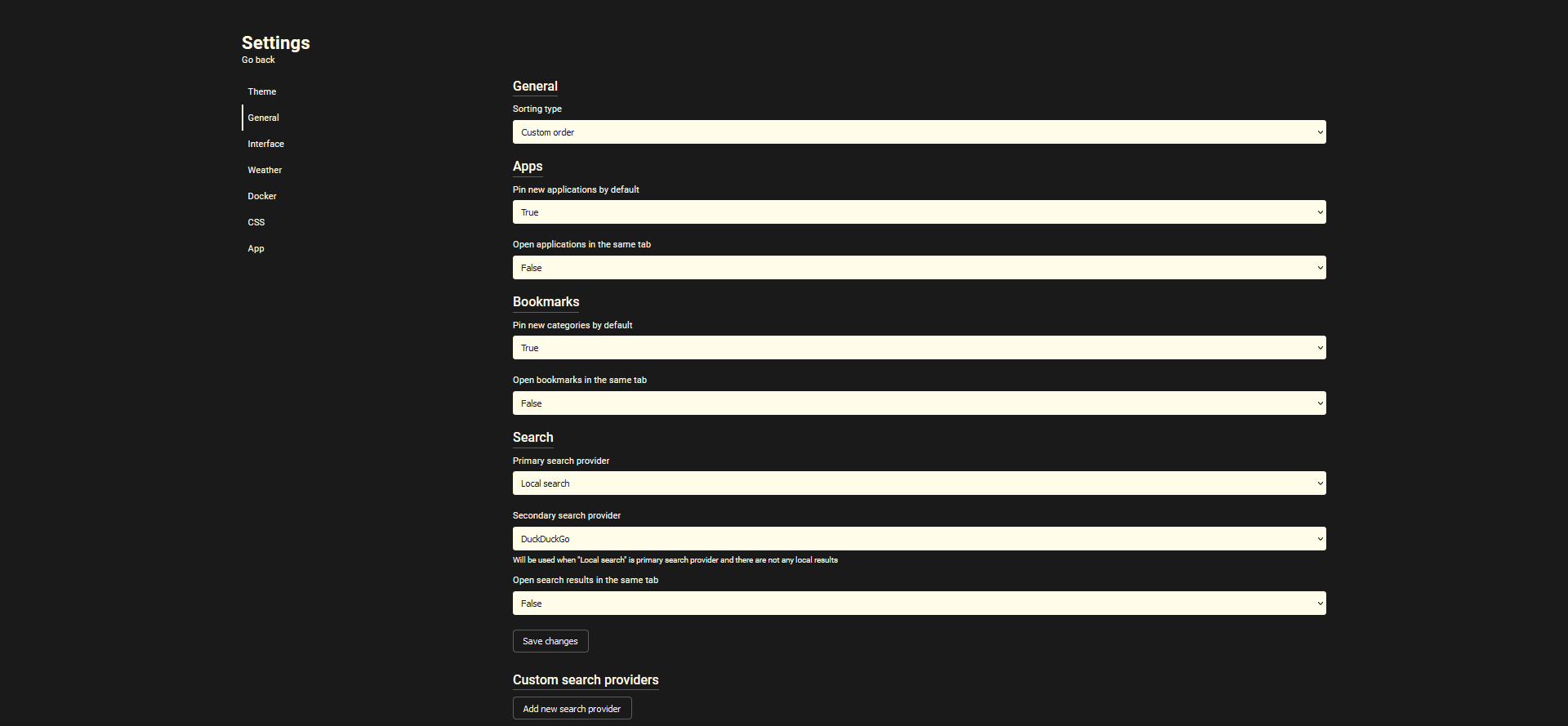
Within the interface settings you can change the page title which shows on the browser tab. You can hide different sections of the dashboard and much more.
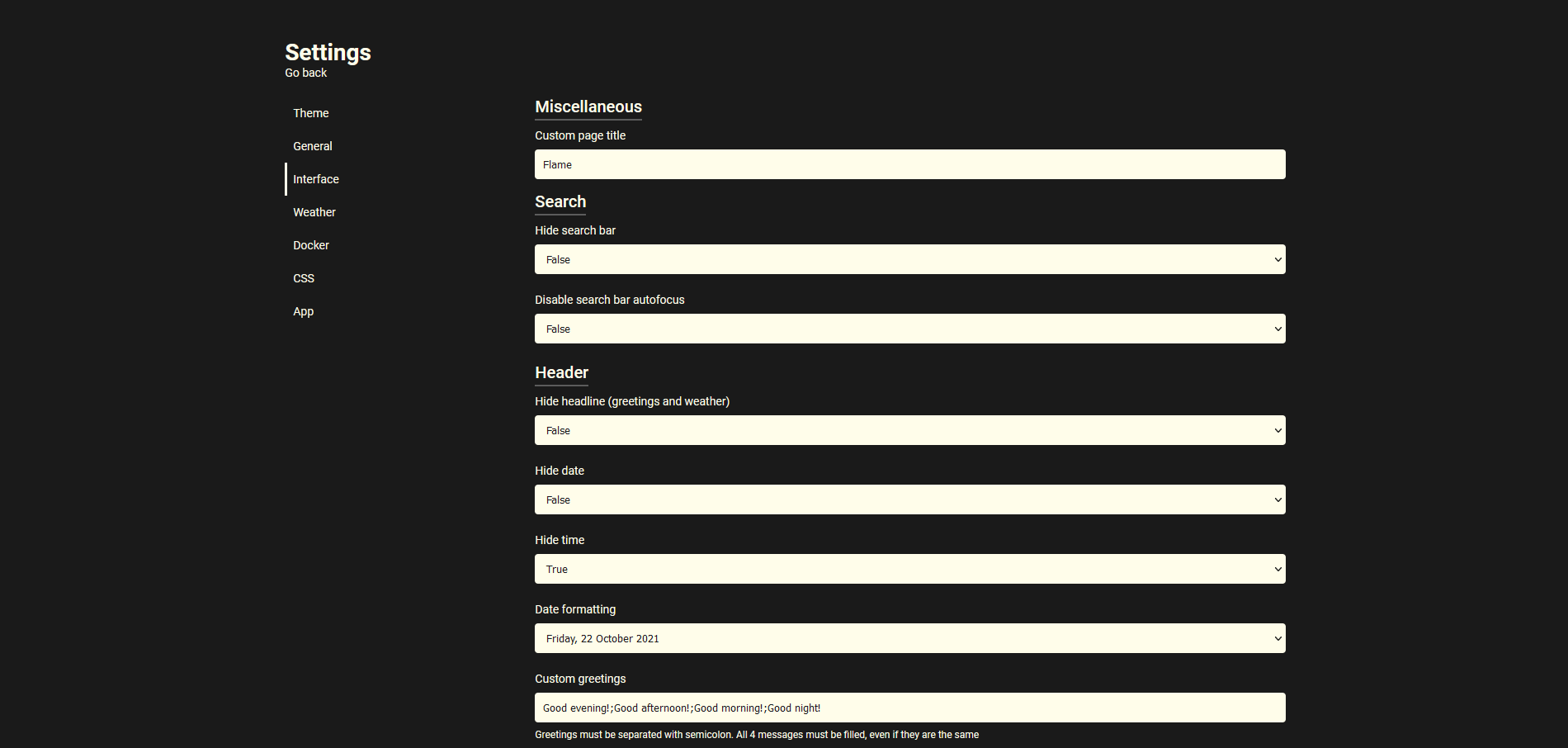
Adding the weather widget is as simple as grabbing an API key from weathrapi.com. It's not free though so I don't usually use it and weather can be seen everywhere you look these days anyway. But, I did add the 14 day trial so you can see what it would look like. It shows the temperature in Fahrenheit at the top and the humidity at the bottom in percentage.
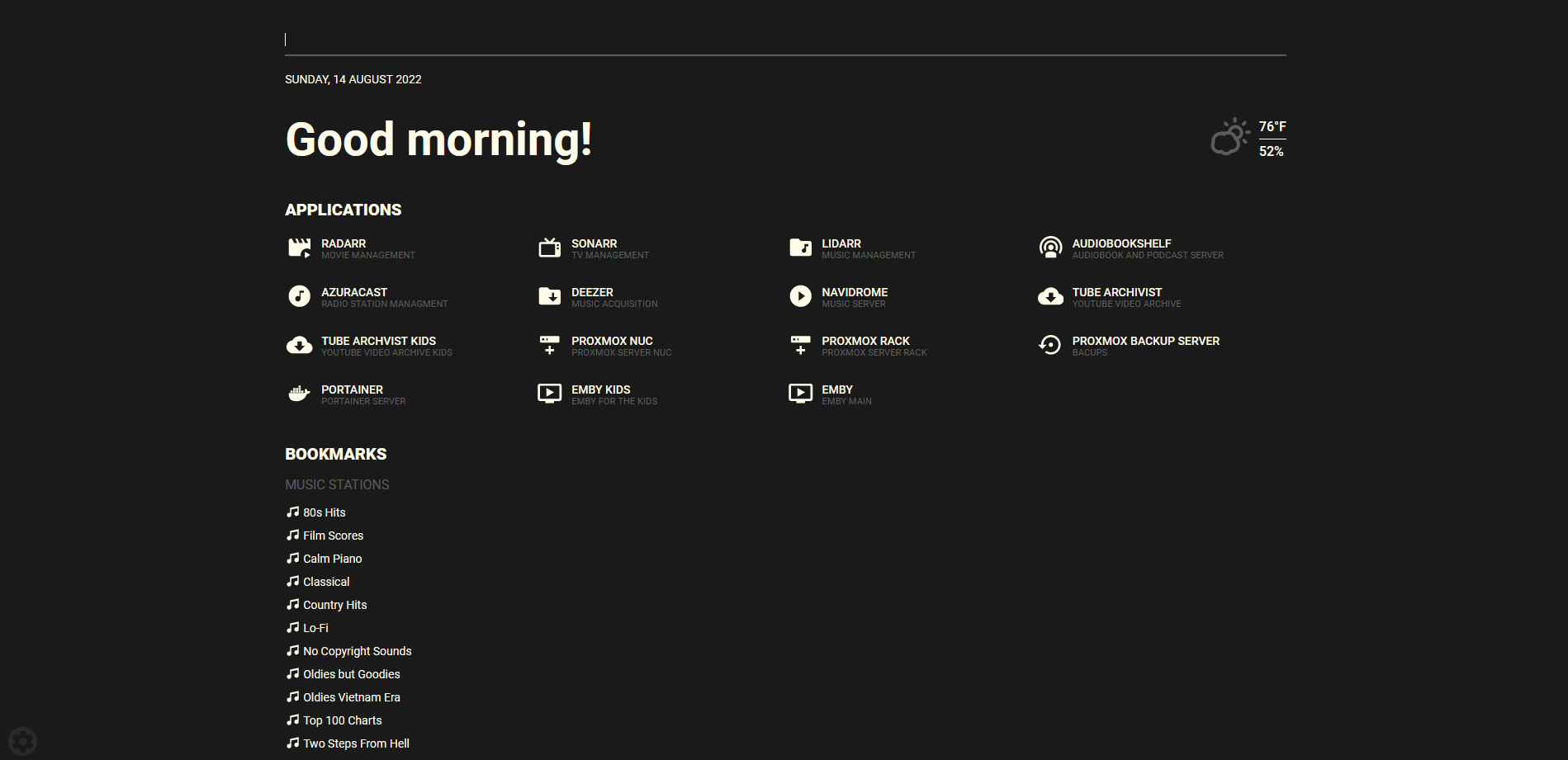
Authentication and permissions really make Flame a top contending dashboard. As you add a bookmark or application, you can choose to make it visible to public or only for those who are logged in.
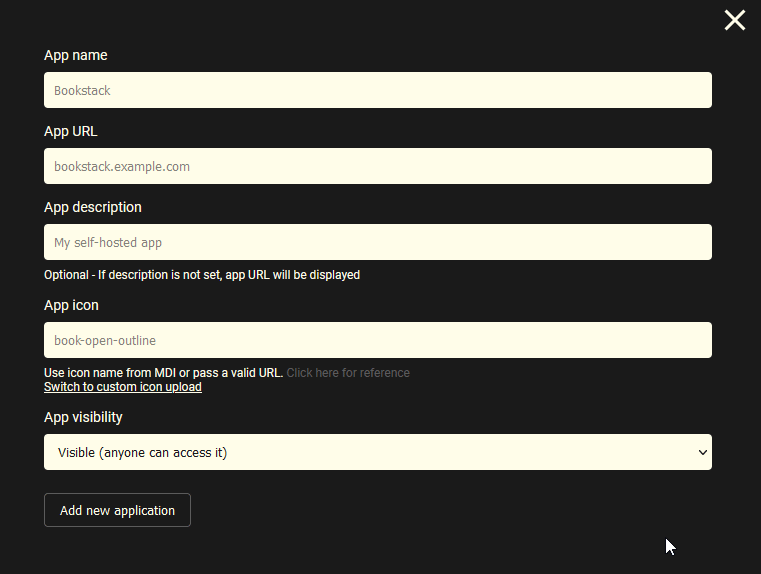
Installing Flame Dashboard using Docker
Flame Dashboard ships with a Docker image and the documentation couldn't make it easier with this Docker Compose stack.
version: '3.6'
services:
flame:
image: pawelmalak/flame
container_name: flame
volumes:
- /path/to/host/data:/app/data
- /var/run/docker.sock:/var/run/docker.sock # optional but required for Docker integration
ports:
- 5005:5005
secrets:
- password # optional but required for (1)
environment:
- PASSWORD=flame_password
- PASSWORD_FILE=/run/secrets/password # optional but required for (1)
restart: unless-stopped
# optional but required for Docker secrets (1)
secrets:
password:
file: /path/to/secrets/password
Final Notes and Thoughts
After using Flame now for about a month, it has really started to grow on me and I find myself using it way more than I thought I would. If there was one thing I would like to see added... and yes, I am being picky here but you can pretty much change everything BUT the name of "Applications" on the main dashboard screen.

For now there is no native way to change it within the settings. However, I whipped up this CSS that does the job.
:root {
--name-bookmarks: "Bookmarks";
--name-applications: "Stations";
}
/****************************************************/
/* Translate h2 headings */
/* - - - - - - - - - - - - - - - - - - - - - - - - -*/
a[href="/applications"] > h2,
a[href="/bookmarks"] > h2 {
visibility: hidden;
}
a[href="/applications"] > h2::before {
content: var(--name-applications);
visibility: visible;
}
a[href="/bookmarks"] > h2::before {
content: var(--name-bookmarks);
visibility: visible;
}```Paste this within the CSS section in the settings.
Here are the results
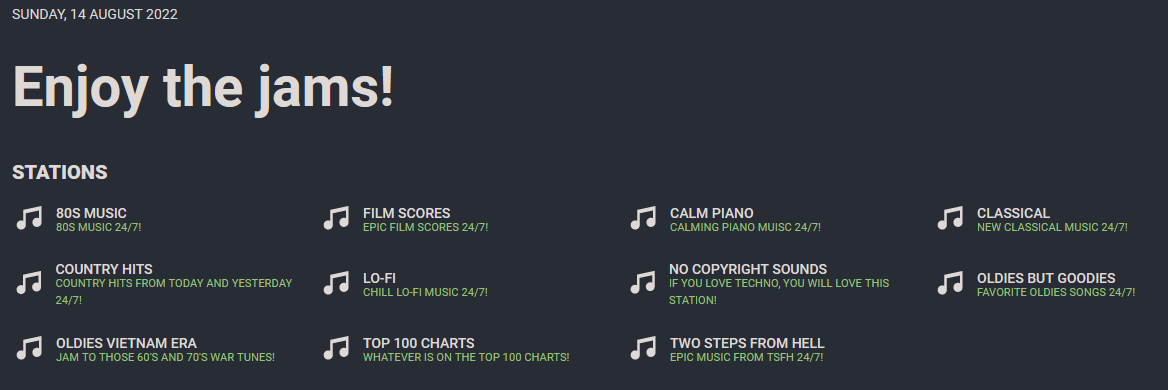
If you find Flame useful, give it a star on the Flame Dashboard Github repo!
More self-hosted dashboard apps worth checking out.


